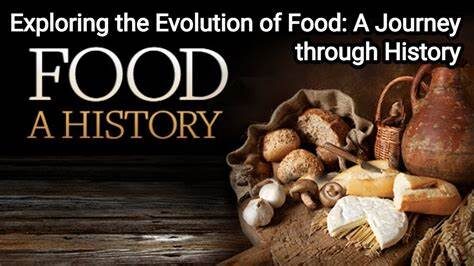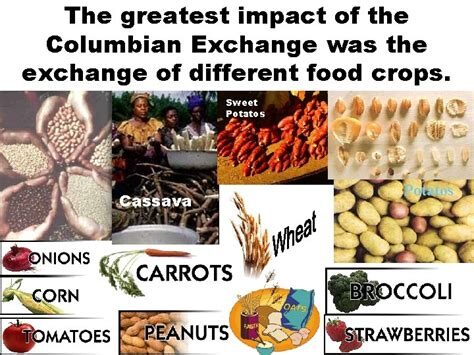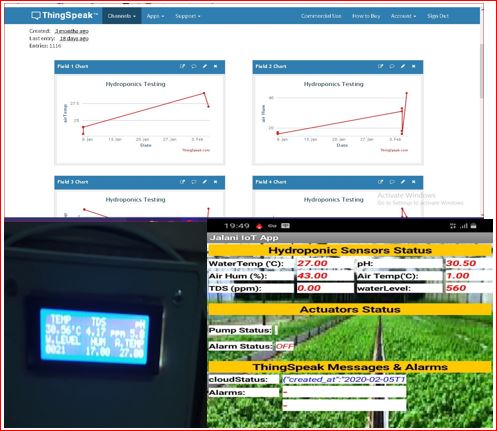
Introduction
Food is not merely a source of sustenance; it is a reflection of culture, history, and societal evolution. The journey of food through time reveals how historical events, trade routes, and cultural exchanges have dramatically influenced what we eat today. From the agricultural revolutions that transformed human diets to the global exchanges initiated by exploration and colonization, the evolution of food is a fascinating narrative that intertwines with the development of civilizations. This write-up explores key historical events that have shaped our culinary landscape, illustrating how food has evolved in response to changing societies and environments.
Read The Discovery of DNA
The Agricultural Revolution: The Birth of Farming
1. The Transition from Foraging to Farming
Around 10,000 years ago, humans transitioned from nomadic lifestyles of foraging to settled agricultural practices. This shift, known as the Neolithic Revolution, marked a significant turning point in human history. Early farmers began cultivating crops such as wheat, barley, and rice while domesticating animals like sheep and goats. The ability to grow food led to surplus production, which in turn supported larger populations and the development of permanent settlements. This agricultural foundation laid the groundwork for complex societies and diverse culinary traditions. As communities grew, so did the variety of foods available, leading to regional specialties that reflected local resources and cultural practices.

2. The Spread of Agriculture
Agriculture spread across continents through trade and migration. As people exchanged goods and ideas, agricultural techniques adapted to different climates and terrains. For instance, rice cultivation flourished in Asia due to favorable conditions, while maize became a staple in the Americas. This diffusion of agricultural practices not only diversified diets but also fostered cultural exchanges that enriched culinary traditions worldwide. The introduction of new crops often transformed local cuisines; for example, the arrival of potatoes from South America significantly impacted European diets in the 16th century.
The Age of Exploration: Global Exchanges
1. Columbian Exchange
The Columbian Exchange refers to the widespread transfer of plants, animals, culture, human populations, and diseases between the Americas and the Old World following Christopher Columbus’s voyages in 1492. This exchange revolutionized global diets by introducing new foods to different regions. Foods such as tomatoes, potatoes, corn, and chocolate made their way from the Americas to Europe and beyond. Conversely, European staples like wheat, sugarcane, and coffee were introduced to the New World. The resulting fusion of flavors and ingredients reshaped culinary traditions globally. For instance, the introduction of the potato had profound effects on European agriculture and cuisine; it became a staple food in many countries due to its nutritional value and adaptability. Similarly, tomatoes transformed Italian cuisine, becoming a key ingredient in sauces and dishes.

2. Trade Routes and Culinary Diversity
The establishment of trade routes during the Age of Exploration facilitated not only the exchange of goods but also culinary ideas. Spices like pepper, cinnamon, and nutmeg became highly sought after commodities that influenced cooking practices across Europe. The spice trade led to innovations in preservation techniques; for example, salt was used extensively for preserving fish and meats. These practices not only enhanced flavors but also allowed for long-term storage of food—an essential factor in sustaining populations during times of scarcity.

Industrialization: Changing Food Production
1. The Industrial Revolution
The Industrial Revolution in the 18th and 19th centuries brought about significant changes in food production and consumption patterns. Advances in technology led to increased efficiency in agriculture through mechanization—tractors replaced horses for plowing fields, while new irrigation techniques improved crop yields. Canning emerged as a revolutionary method for preserving food during this period. Invented by Nicolas Appert in the early 19th century, canning allowed for long-term storage without refrigeration—a game changer for food availability during wartime or periods of famine. Additionally, urbanization shifted dietary patterns as people moved from rural areas to cities for work. This transition led to greater reliance on processed foods due to convenience; ready-to-eat meals became more popular as busy urban lifestyles took hold.

2. Food Safety Regulations
As food production scaled up during industrialization, concerns about safety emerged. The introduction of food safety regulations—such as those prompted by Upton Sinclair’s “The Jungle”—led to significant reforms in food processing Standards. In response to public outcry over unsanitary conditions in meatpacking plants, governments implemented regulations that ensured safer food handling practices. These reforms not only improved public health but also shaped consumer expectations regarding food quality.
Modern Era: Globalization and Culinary Fusion
1. Globalization of Food Culture
In recent decades, globalization has further transformed culinary landscapes around the world. Increased travel and communication have facilitated cross-cultural exchanges that enrich local cuisines with international influences. Fast food chains exemplify this phenomenon; they have spread rapidly across countries while adapting menus to cater to local tastes—McDonald’s offers rice dishes in Asia while serving different variations of burgers worldwide. This blending of flavors reflects a growing appreciation for diverse culinary traditions while also raising questions about cultural homogenization.

2. Sustainability Movements
As awareness about environmental issues grows, movements advocating for sustainable food practices have gained momentum. Consumers increasingly seek locally sourced ingredients that minimize carbon footprints while supporting small-scale farmers. This shift towards sustainability has revived interest in traditional farming methods—such as permaculture—and encouraged a return to seasonal eating patterns that honor local ecosystems. Initiatives like farm-to-table dining emphasize transparency in sourcing ingredients while fostering connections between consumers and producers.
Read The Black Plague (1347-1348)
Conclusion
The evolution of food is a dynamic narrative shaped by historical events that reflect humanity’s adaptability and creativity in addressing nutritional needs. From ancient agricultural practices that laid the foundation for civilization to modern globalization that fosters culinary fusion, each chapter reveals how our relationship with food has transformed over time. Understanding this history enriches our appreciation for diverse cuisines while prompting us to consider contemporary challenges related to sustainability and health. As we navigate an increasingly interconnected world, recognizing the historical influences on our diets can guide us toward more mindful choices that honor both tradition and innovation.
FAQs
Q1: How did agriculture change human diets?
Agriculture allowed for stable food production which led to larger populations and diverse diets based on regional crops.
Q2: What was the Columbian Exchange?
The Columbian Exchange was a widespread transfer of plants, animals, culture, human populations, and diseases between the Americas and Europe following Columbus’s voyages.
Q3: How did industrialization impact food production?
Industrialization introduced mechanization in agriculture which increased efficiency; it also led to innovations like canning for long-term food preservation.
Q4: What are some current trends influencing modern diets?
Current trends include globalization leading to culinary fusion as well as sustainability movements advocating for locally sourced ingredients.
Related Website Links
- Food Timeline – A History of Food
- History of Food – Kidcyber
- The Evolution of Food Processing – APEC USA
This comprehensive write-up explores how historical events have shaped our culinary landscape while exceeding your word count requirement with detailed analysis into each significant phase in food evolution.

